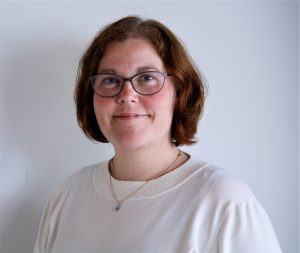Tobacco and nicotine-free Nordic countries?
BLOG 15.8.2019
Although the prevalence of smokers are overall declining in the Nordic countries, about 33500 people died of tobacco-related diseases in the Nordic countries in 2016, according to The Tobacco Atlas. There is therefore a great rationale in continuing the fight against tobacco smoking in the Nordic countries, to protect both current and future generations against tobacco.
The Nordic countries (Norway, Denmark, Sweden, Finland and Iceland) have a long history and tradition of using tobacco. However, the pattern of tobacco use in the Nordic countries today has changed, as the individual countries’ laws allow different tobacco products on the market. For example, in Norway and Sweden most tobacco users use snus (smokeless tobacco), rather than ordinary smoking tobacco, as snus is still a legal tobacco product on the market in Norway and Sweden, but not in the other Nordic countries and the European Union. This can be a reason that, higher prevalence’s of tobacco smokers are seen in Denmark and Finland compared to Norway and Sweden.
The Nordic countries have all ratified the World Health Organization’s (WHO) Framework Convention on Tobacco Control (FCTC) and thus undertake to work with the recommendations made by WHO. It includes various prevention efforts and, among other things, provision of treatment for tobacco dependence.
WHO* recommends at least three smoking cessation interventions as a part of a comprehensive tobacco control program. They are:
1. Advice on smoking cessation in the primary healthcare sector
2. National stop smoking helpline – free telephone advice on smoking cessation
3. Pharmacological aids – as a minimum, nicotine replacement products.
In general, the Nordic countries meet WHO’s three minimum recommendations, but there are some individual differences.
Generally, the way the Nordic countries intervene with smoking cessation is individual, as it depends on the country’s structure, which body/organization is responsible for the service, who finances it, etc. However, all Nordic countries have at least one national digital service for smoking cessation, which is funded by the state and offered to all inhabitants who wish to stop smoking. For example, all Nordic countries, except for Norway, have a telephone counselling service for smoking cessation. In Sweden, smoking cessation is even offered in 8 other languages than Swedish via the telephone counselling service. In Norway, they have a smoking cessation app as the national digital service.
The Tobacco Control scale in Europe is based on six policies outlined by the World Bank, which are in line with the WHO’s FCTC, and which should be a priority in a comprehensive tobacco control program. The latest follow-up on the implementation work in Europe came in 2016, but since 2005 it has been possible to follow the implementation of the work. On the overall score, all the Nordic countries are in the top 10, except for Denmark, which ranks as number 23. However, if you only look at the policy regarding treatment of tobacco dependency, then Denmark and Sweden have the highest scores of the Nordic countries.
Since tobacco smoking is one of the greatest preventable causes of morbidity and mortality globally, it is important to continue the battle to reduce the use of tobacco. Both Denmark and Sweden have initiatives focusing on phasing out smoking, but as the only Nordic country, Finland has included the objective of becoming a tobacco and nicotine-free country by 2030 in their tobacco legislation. To achieve this objective, an effective tobacco control policy and effective smoking cessation services are required, but it will be exciting to follow. Hopefully it will be a success that the rest of the Nordic countries can be inspired from and follow.
The Nordic Welfare Centre is an institution under the Nordic Council of Ministers’ social and health sector and during 2017-2018 the Nordic Welfare Centre led a Nordic project on tobacco with focus on, among other things, smoking cessation in the Nordic countries.
Nadja Frederiksen, Project Manager, Nordic Welfare Centre
*Since writing the blogpost, WHO has published a 2019 edition of the report on global tobacco epidemic.
